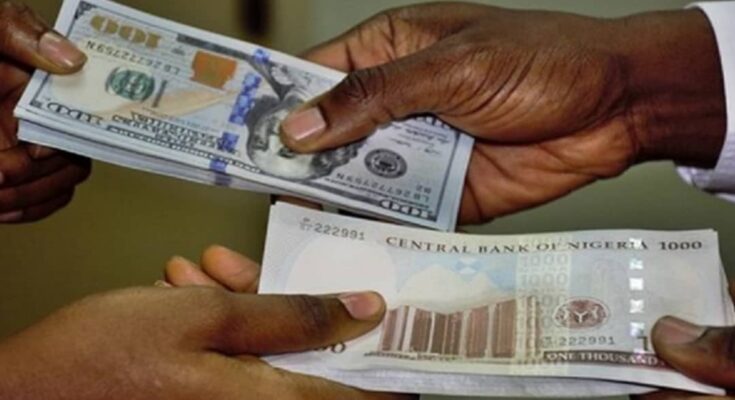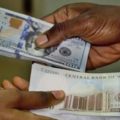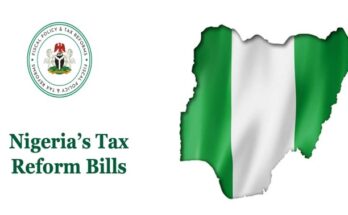By Oluwayanmife Ayobami
Since Nigeria became independent, the value of the Nigerian currency, called the naira, has gone up and down a lot. It has been a bumpy ride. When the naira was introduced in 1973, you could buy a dollar with less than one naira.
But over the years, the value of the naira compared to foreign currencies, like the US dollar, has been unstable. Sometimes it goes up, and sometimes it goes down but it rarely goes down. This has caused a lot of debates and discussions about what should be done to make the naira stronger and more stable.
Understanding the history of the naira’s value helps us see why there are different opinions about what should be done. It’s a complicated issue that affects the country’s economy as a whole.
Babaginda 1970s-1980s: Second-Tier Foreign Exchange Market (SFEM)
The story of the naira’s value is a journey that started in 1973, when it was introduced at a rate of less than one naira to the US dollar. But things changed over time, and by 1993, the value of the naira had decreased significantly to 17 naira to $1. This shift happened during President Babangida’s time in office, and it was also when bureaux de change became a part of the economic system.
In 1986, there was a big change called the Second-Tier Foreign Exchange Market (SFEM), which was meant to address Nigeria’s economic challenges. Before this change, the naira used to trade at around 90 kobo to $1 in the 1970s and early 1980s. But after SFEM, the value of the naira dropped to 17 naira to $1.
Sani Abacha’s Era (1993-1998): Fixed exchange rate
During Sani Abacha’s time as the president of Nigeria from 1993 to 1998, the official exchange rate of the naira was fixed at 22 naira to $1. However, this fixed rate caused problems because there were not enough dollars available, especially since oil prices were low.
As a result, a black market for foreign exchange thrived, with the naira being traded at much higher rates, like 88 naira to $1. Banks came up with clever methods to work around these limitations. They inflated the amount of foreign currency they requested, mixed official and black market rates, and made significant profits from the difference.
In 1995, the Autonomous Foreign Exchange Market (AFEM) was introduced by the Central Bank of Nigeria to sell foreign currency at “market” rates. However, there was still a high demand for dollars at the official rate, which was difficult to meet due to limited availability.
These practices, despite the economic challenges, led to the establishment of wealthy individuals and families in the banking sector, shaping Nigeria’s financial landscape for years to come.
Joseph Sanusi’s reforms (1999-2004): IFEM and Forex Round-Tripping
Joseph Sanusi, when he was the Governor of the Central Bank of Nigeria, made important changes to the economy. One major change was the introduction of the Interbank Foreign Exchange Market (IFEM). This was because the old exchange rate of 22 naira to $1 was causing problems. The value of the naira dropped to 85 naira to the dollar within a year, and on the black market, it was even worse at 105 naira to $1. To try and control the situation, banks started doing some tricky things, like selling forex above the official rate and doing forex round-tripping, where they would use different rates to make more money. These practices continued even after Sanusi’s time in office.
Later on, when oil prices went up and Nigeria got debt relief, things improved. But the shady practices from before still persisted. Banks would suspend the official system for a while and set limits to how much they could sell forex for, but they would still find ways to make extra money outside of the official channels. They played around with rates and used funny terms like ‘NIBSS and Drafts’ to describe their tactics. There was even a game of round-tripping where banks made a lot of money by moving money abroad. Some banks even gave rewards to their employees who were good at these practices.
Oil Boom and Soludo’s Reforms (2004-2009)
When Charles Soludo was the Governor of the Central Bank of Nigeria, he took advantage of the high oil prices and the money Nigeria had saved to make some changes. He wanted to make the exchange rate system more flexible and fair. He allowed more things, like medical bills and credit card expenses, to qualify for foreign exchange requests. This made it easier for businesses to get foreign currency through official channels instead of the black market.
As a result, the Nigerian currency, the naira, became stronger compared to the US dollar. This happened without them purposely trying to make the naira stronger. People were able to get foreign currency through proper channels instead of relying on the black market.
However, things started to change when oil prices dropped in 2008. Even though Nigeria had a lot of money saved, Soludo made it difficult for people to get foreign currency, and he also stopped some exchange activities for six months. As a result, the value of the naira went down, and it became more expensive to buy foreign currency.
If Soludo hadn’t made these changes, things would have likely gone back to normal after a few months. But sometimes, during economic changes, people feel the urge to do something quickly. Soludo’s actions showed how difficult it can be to manage exchange rates during uncertain times.
Sanusi Lamido Sanusi’s stabilization (2009-2014)
When Sanusi Lamido Sanusi was the Governor of the Central Bank of Nigeria, he faced the challenge of keeping the Nigerian currency, the naira, stable when oil prices were high. Nigeria was struggling to save money, which made it harder to defend the value of the naira and keep it steady. To attract foreign investors, Sanusi allowed them to buy government bonds for longer periods of time. This brought in a lot of money, but some of it was “hot money” that entered and left the country quickly, causing some instability in the exchange rate.
As oil prices went up, Sanusi allowed the Interbank and WDAS markets to operate again, which had been banned before. But there was a problem – Nigeria wasn’t saving enough money. To fix this, Sanusi removed the restriction on foreign investors buying government bonds for longer periods. This brought in more money, but it was still “hot money” that came and went quickly.
Removing the restriction also helped Nigeria meet the conditions to be included in the JP Morgan Index, which was important for the country’s reputation. Despite the challenges and the money coming and going, Sanusi’s actions helped keep the exchange rate somewhat stable. When he started his job, the naira was trading at 148 naira to the dollar, and when he left, it was 164 naira. But some people say that this stability was not completely reliable or stable in the long term.
Emefiele’s Challenges (2014-2023): Forex Controls and Devaluation
Godwin Emefiele, the former governor of the Central Bank of Nigeria, tried to control the demand for US dollars when the value of the Nigerian currency, the naira, was under pressure due to falling oil prices. However, his attempts were not successful. He took extreme measures such as banning the Interbank forex market and restricting the use of forex for certain items. These actions directly contradicted the policies of his predecessor, Charles Soludo. Unfortunately, these efforts caused the naira’s value to drop to N460/$.
The economic situation was bleak because it cost around $30 to extract a barrel of crude oil in Nigeria. When oil prices were at $110 per barrel, Nigeria made a profit of about $80 per barrel. But as oil prices fell to $45, the profit margin shrank to just $15, taking into account the ongoing cost of extraction. In other words, while oil prices dropped by 60%, Nigeria’s revenue decreased by 81%. This put Nigeria at risk of earning almost nothing, especially if oil prices fell further to $40 or lower.
When a country faces economic crises, one common strategy is to use its reserves. However, Nigeria did not save enough during prosperous times, unlike some other oil-producing countries. Although it was claimed that Nigeria’s reserves were $30 billion, they were probably much less, possibly around $20 billion when considering funds that were already committed.
Emefiele’s tenure as governor ended with these measures, which caused the naira to lose value and reach N460/$. His resignation paved the way for the appointment of Olayemi Cardoso as the new governor of the Central Bank of Nigeria in September.
Currently, the value of the Nigerian naira has significantly decreased, with one US dollar being exchanged for nearly N780 in the informal market. This depreciation is a result of various factors such as inflation, economic mismanagement, and corruption, according to analysts. The demand for foreign exchange is greater than the supply, causing the naira to weaken further in the informal market. It is uncertain how the official exchange rate will be affected, as it depends on the policies of the Central Bank of Nigeria (CBN). The new president, Bola Tinubu, aims to address the country’s foreign currency shortage through a major currency devaluation in June.
Olayemi Cardoso, the new governor of the CBN, has identified the urgent need to address the significant decline in the value of the naira. Restoring confidence in the foreign exchange market is crucial for the country’s economy. The current situation is characterized by a lack of confidence, leading to speculation against the naira. The economy is also facing challenges such as a depreciating exchange rate, high energy costs, inflationary pressures, a backlog of foreign exchange obligations, and debt service obligations. Cardoso aims to implement immediate and short-to-medium-term measures to address the issue of the falling naira.
During the screening at the National Assembly, Cardoso outlined some of the measures he plans to implement, including driving an open, transparent, and rule-based system to restore stability to the foreign exchange market.








